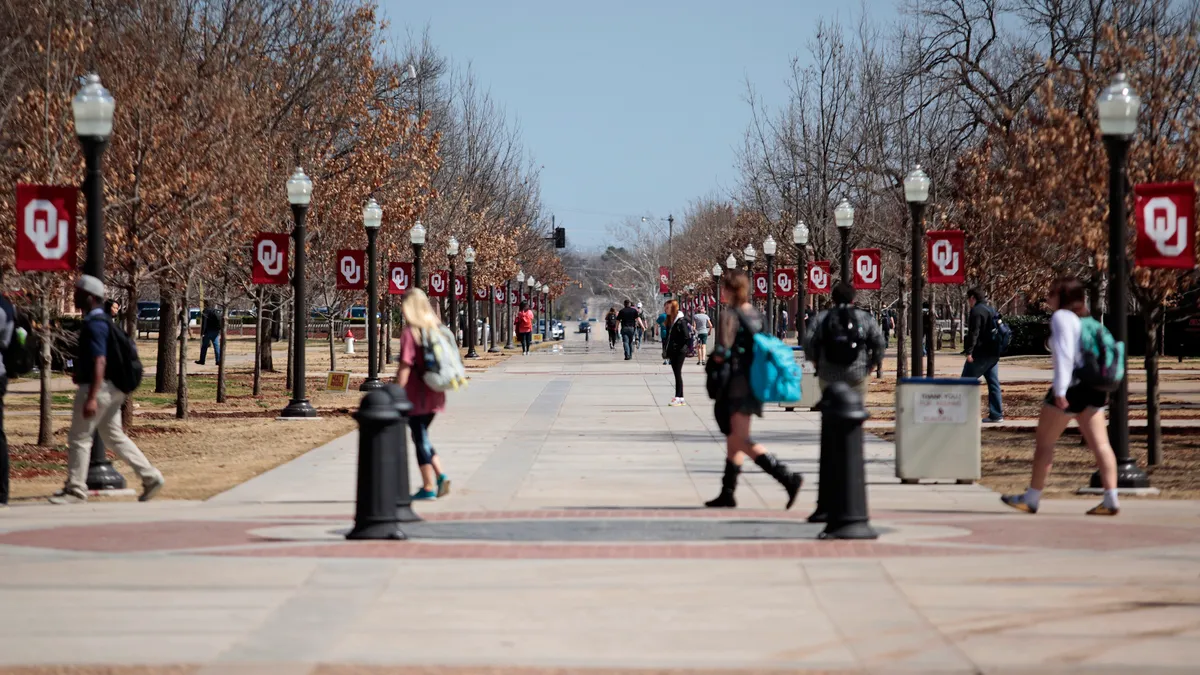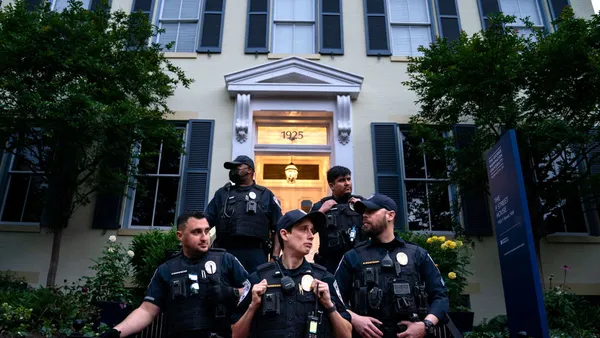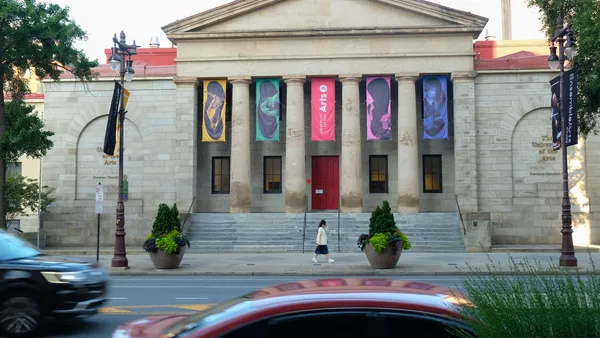Dive Brief:
- Federal relief funding for higher education during the pandemic helped to stave off major financial losses, keep students enrolled and prevent colleges from shutting down, according to research released today that details administrators' thinking after more than a year of the health crisis.
- Colleges face an uncertain long-term outlook as prospects for state funding remain unclear, enrollment challenges loom and coronavirus-related threats continue, according to the research, which is from left-leaning think tank New America and summarizes interviews earlier this year with administrators at non-elite colleges. One community college president said that without federal relief funding, "You're talking to a probably drunk president right now," before pointing out the money was a short-term reprieve that won't be around in the future.
- Presidents described their colleges as resilient or "struggling, but persevering" after the pandemic's first year. They needed to frequently adapt or alter plans in the face of lost revenue, new demands for online operations, changing student needs and frequently revised government requirements. "I got tired of hearing the word pivot, but we had to do a lot of pivoting," the president of a regional public four-year college said.
Dive Insight:
The findings are consistent with other leading indicators of the higher ed sector's condition. Colleges have benefited from substantial federal relief funding, but the 2022 calendar year is likely the last in which that pot of money will buoy institutions' budgets, Fitch Ratings said Tuesday. Admissions and retention challenges mount, as undergraduate enrollment fell sharply for the second straight year, particularly at community colleges, according to the most recent fall data from the National Student Clearinghouse Research Center.
Against that backdrop, the New America report offers a look into the experiences of leaders at the types of colleges most exposed to the pandemic's pressures. It includes thoughts from 24 presidents and senior-level administrators at mostly open-enrollment and nonselective institutions: community colleges, regional public four-year colleges, private nonprofit colleges, historically Black colleges, Hispanic-serving institutions and for-profit colleges.
Admissions, recruitment and enrollment were among administrators' top concerns.
Reenrolling stopped-out students will be challenging, college leaders told researchers. Students who stopped attending "were overwhelmingly poor students, first-generation students, and students of color," one community college leader said.
Institutions have encouraged students to reenroll with direct outreach, such as having faculty members initiate contact. One private nonprofit HBCU reached out with phone calls, emails and text messages.
A community college cut the number of steps needed to enroll, eliminated deadlines and struck out late enrollment fees. A regional public four-year college decided to waive tuition, fees and book costs for the summer term to try to keep students in classes.
College leaders worried the pandemic worsened conditions for students who were already struggling to make ends meet. The president of a for-profit college highlighted harm caused by schools and child care providers closing. The digital divide takes two forms, a community college president said: students lacking reliable broadband internet access and students lacking hardware.
"You didn't get a lot of suburb kids driving to Tim Horton's to sit in the parking lot to do their homework on an iPhone," a leader from a private nonprofit college told researchers.
Graduate and health science programs were sometimes bright spots where enrollment grew, college leaders reported. Institutions might turn to such programs to increase enrollment, New America analysts said. But that comes with its own hazards, as debt loads have been rising for graduate students, particularly among non-White students.
"How can we make sure these programs that colleges create are going to give students good outcomes, or outcomes they wanted, and not leave them with hundreds of thousands of dollars of debt and not having a job?" said Sophie Nguyen, policy analyst at New America's education policy program. "There has to be a responsibility and obligation to look into these issues and to hold colleges accountable to make sure they are mindful about the program and its utility."
President Joe Biden's proposed Build Back Better Act would inject new federal funding streams into higher education, including $500 million for college retention and completion and $10 billion for HBCUs and other minority-serving institutions. College leaders also pushed for increased state support for higher education.
"That's how they are able to get more long-term and a more sustainable pot of funding," Nguyen said.
Lake Research Partners, a public opinion and political strategy research firm, conducted interviews for New America from April 19 to June 7. Eight participants also took part in a July 27 roundtable. A report summarizing the work does not identify participating college leaders by name.
New coronavirus variants and frequently changing policies like those surrounding vaccine mandates mean the pandemic looks different than it did when the research took place. The findings remain important, Nguyen said.
"These issues are still there," she said. "We really hope this report can be a time capsule down the road, when any researcher or policymaker wants to learn more about how colleges have dealt with this enormous uncertainty."












